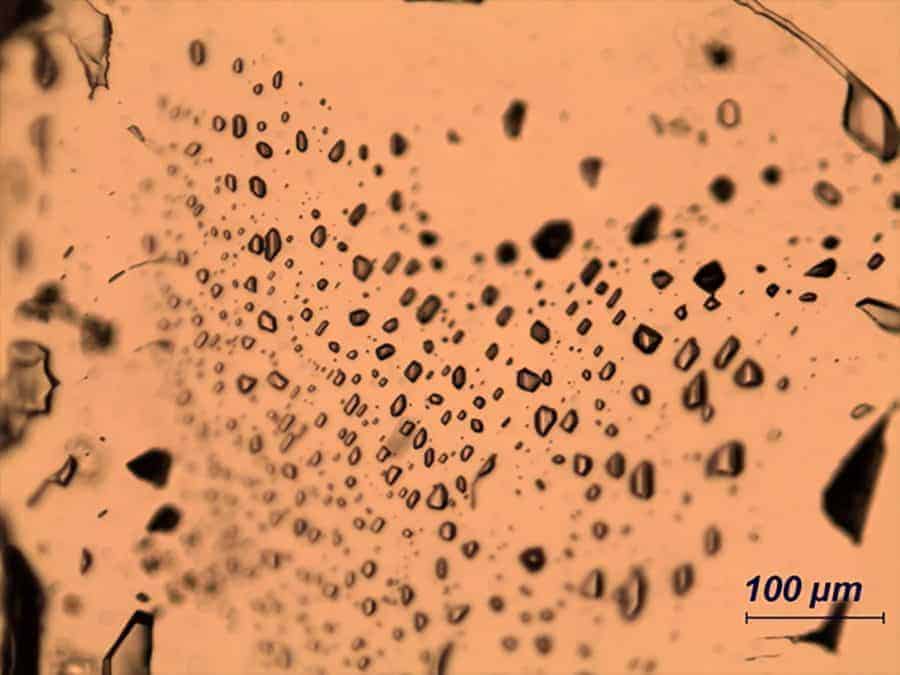
Microbial life already had the necessary conditions to exist on our planet 3.5 billion years ago. This was the conclusion reached by a research team after studying microscopic fluid inclusions in barium sulfate (barite) from the Dresser Mine in Marble Bar, Australia. In their publication “Ingredients for microbial life preserved in 3.5-billion-year-old fluid inclusions,” the researchers suggest that organic carbon compounds which could serve as nutrients for microbial life already existed at this time. The study by first author Helge Mißbach (University of Göttingen, Germany) was published in the journal Nature Communications. Co-author Volker Lüders from the GFZ German Research Center for Geosciences carried out carbon isotope analyses on gases in fluid inclusions.
Fluid inclusions show potential for prehistoric life
Lüders assesses the results as surprising, although he cautions against misinterpreting them. “One should not take the study results as direct evidence for early life,” says the GFZ researcher. Rather, the findings on the 3.5-billion-year-old fluids showed the existence of the potential for just such prehistoric life. Whether life actually arose from it at that time cannot be determined. Based on the results, “we now know a point in time from which we can say it would have been possible,” explains Lüders.
Australian barites as geo-archives
Fluid inclusions in minerals are microscopic geo-archives for the migration of hot solutions and gases in the Earth’s crust. Primary fluid inclusions were formed directly during mineral growth and provide important information about the conditions under which they were formed. This includes the pressure, temperature and the solution composition. In addition to an aqueous phase, fluid inclusions can also contain gases whose chemistry can persist for billions of years. The fluid inclusions examined in this study were trapped during crystallization of the host minerals. The fluid inclusions investigated in this study originate from the Dresser Mine in Australia. They were trapped during crystallisation of the host minerals of barium sulphate (barite). The research team analysed them extensively for their formation conditions, biosignatures and carbon isotopes.
In the course of the analyses, it turned out that they contained primordial metabolism – and thus energy sources for life. The results of Lüders’ carbon isotope analysis provided additional evidence for different carbon sources. While the gas-rich inclusions of gray barites contained traces of magmatic carbon, clear evidence of an organic origin of the carbon could be found in the fluid inclusions of black barites.
Follow-up research is possible
“The study may create a big stir,” Lüders says. Organic molecules of this type have not yet been found so far in fluid inclusions in Archean minerals. At the same time, however, he says the study is just a first step. Lüders says, “The ever-increasing sensitivity of measuring instruments will provide new tools for the study of solid and fluid micro inclusions in minerals. Measurements of bio signatures and isotope ratios are likely to become increasingly accurate in the near future.”
from ScienceBlog.com https://ift.tt/3ugdXfX
No comments:
Post a Comment